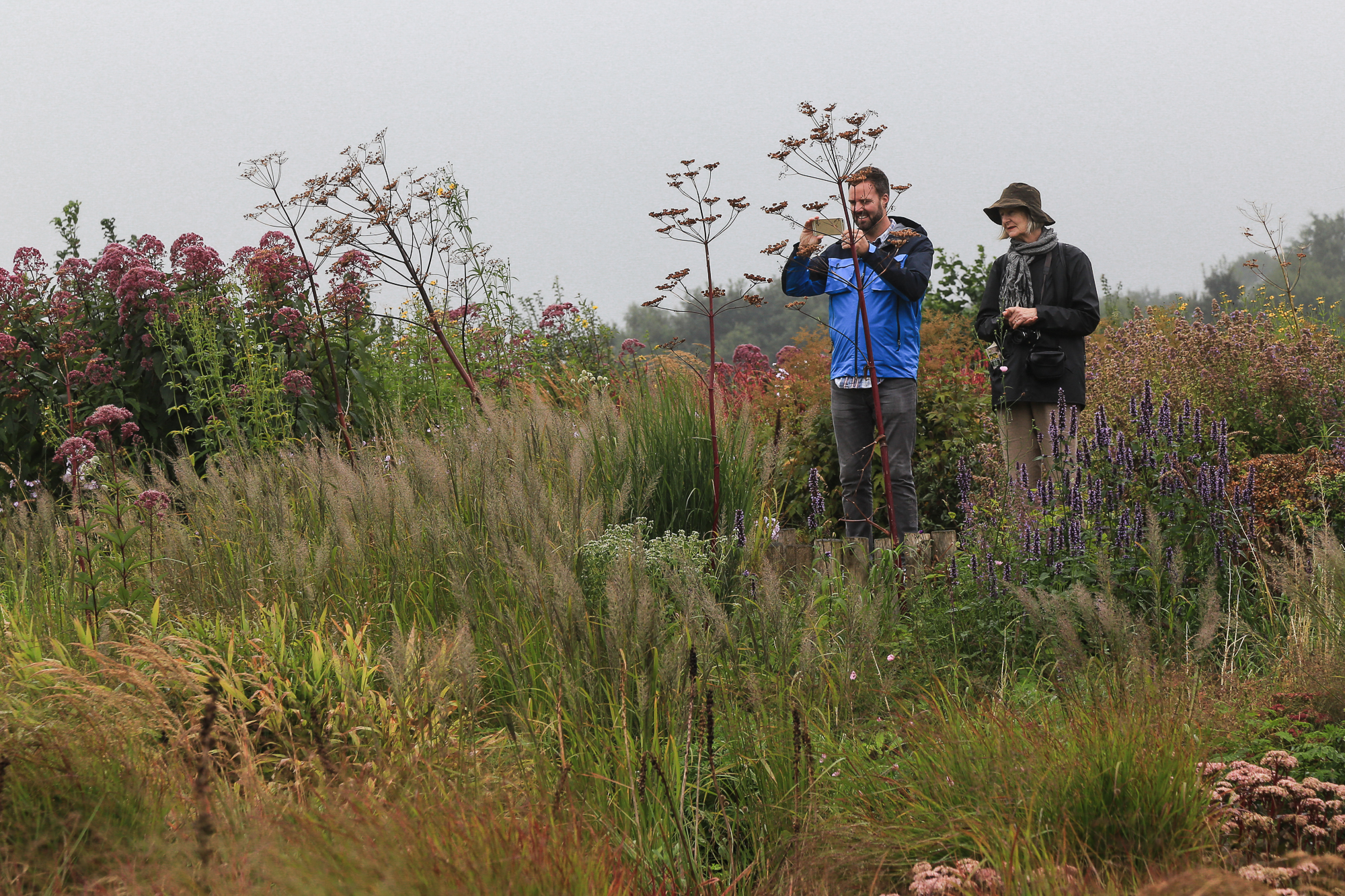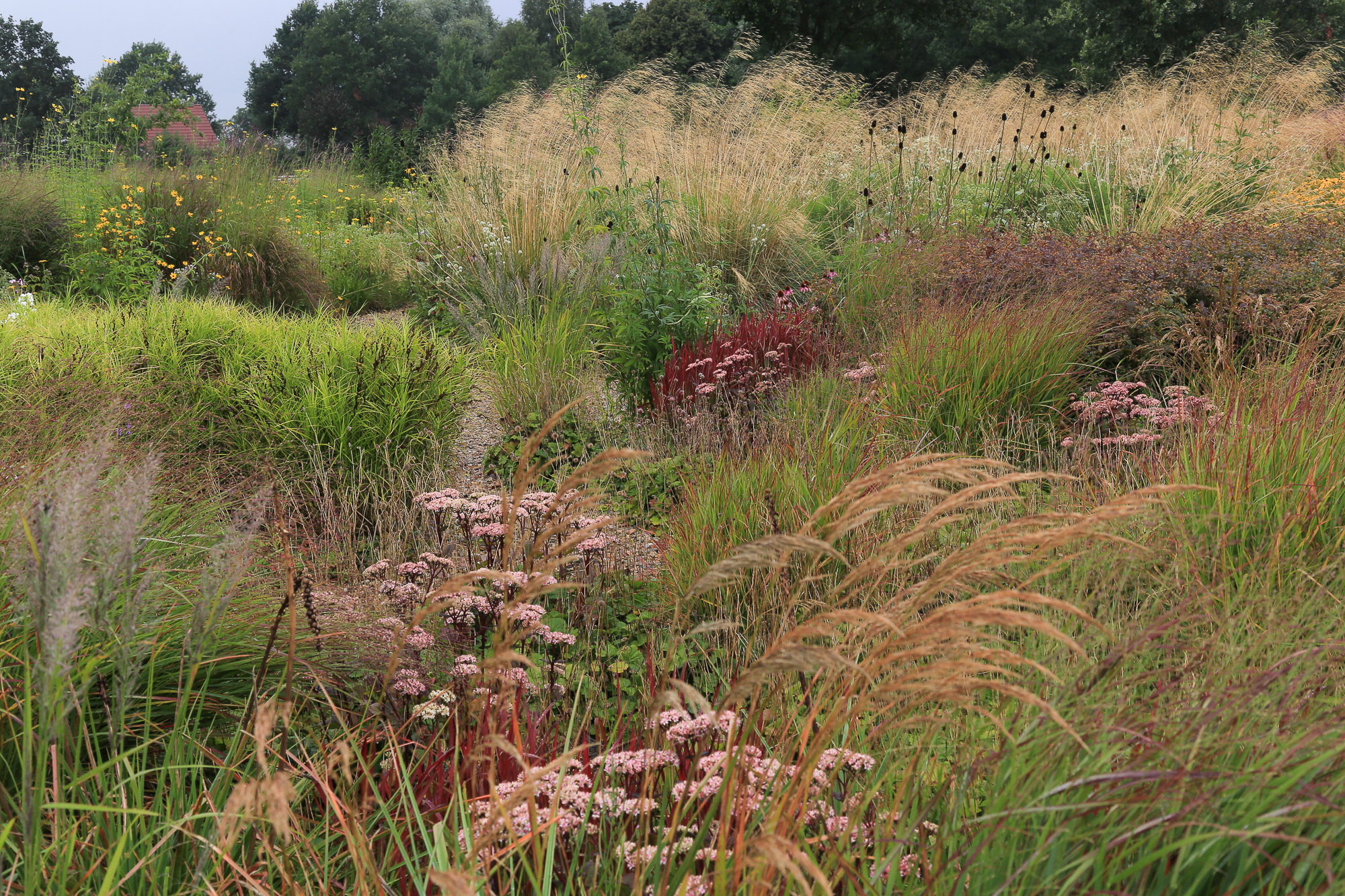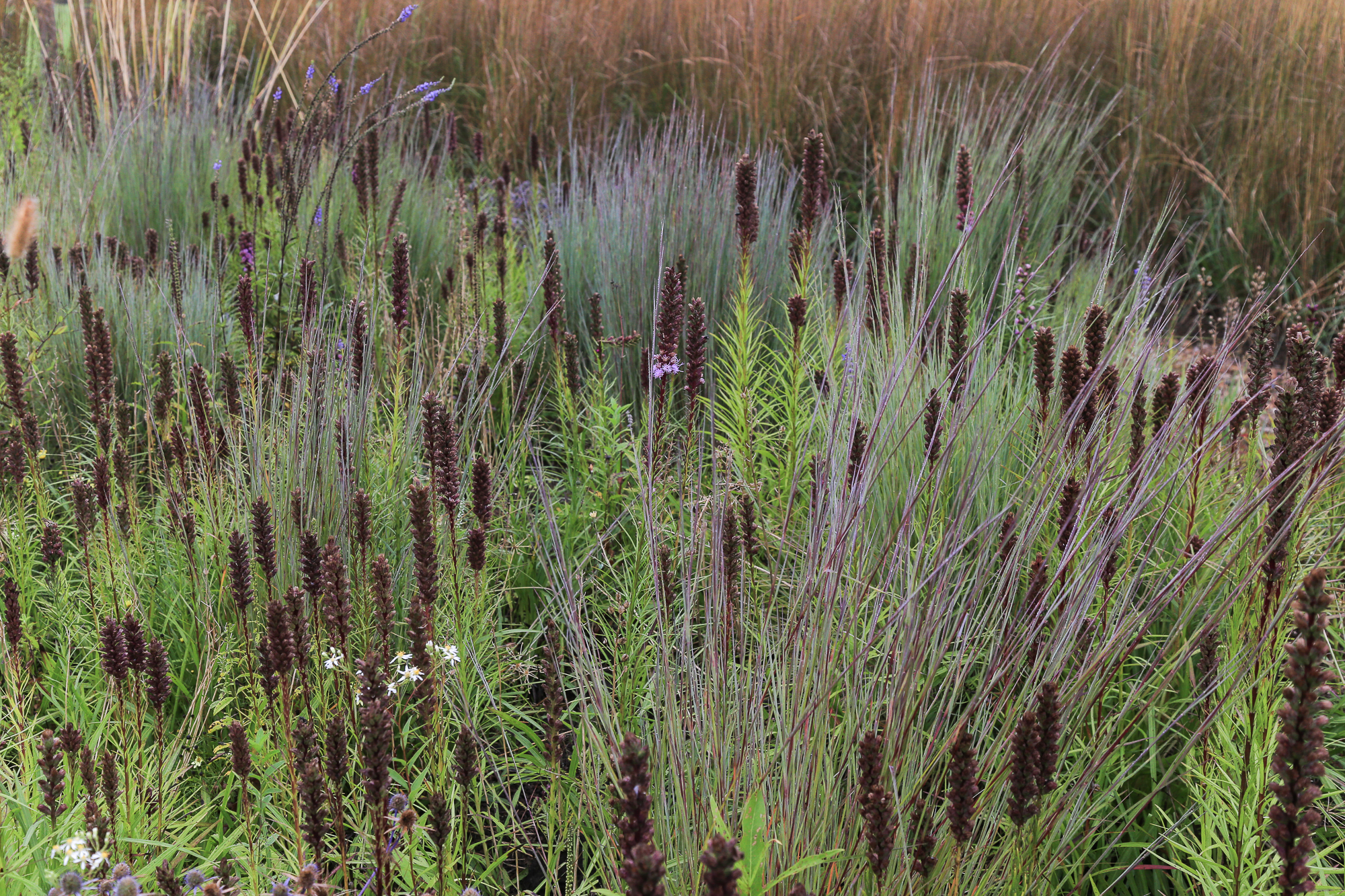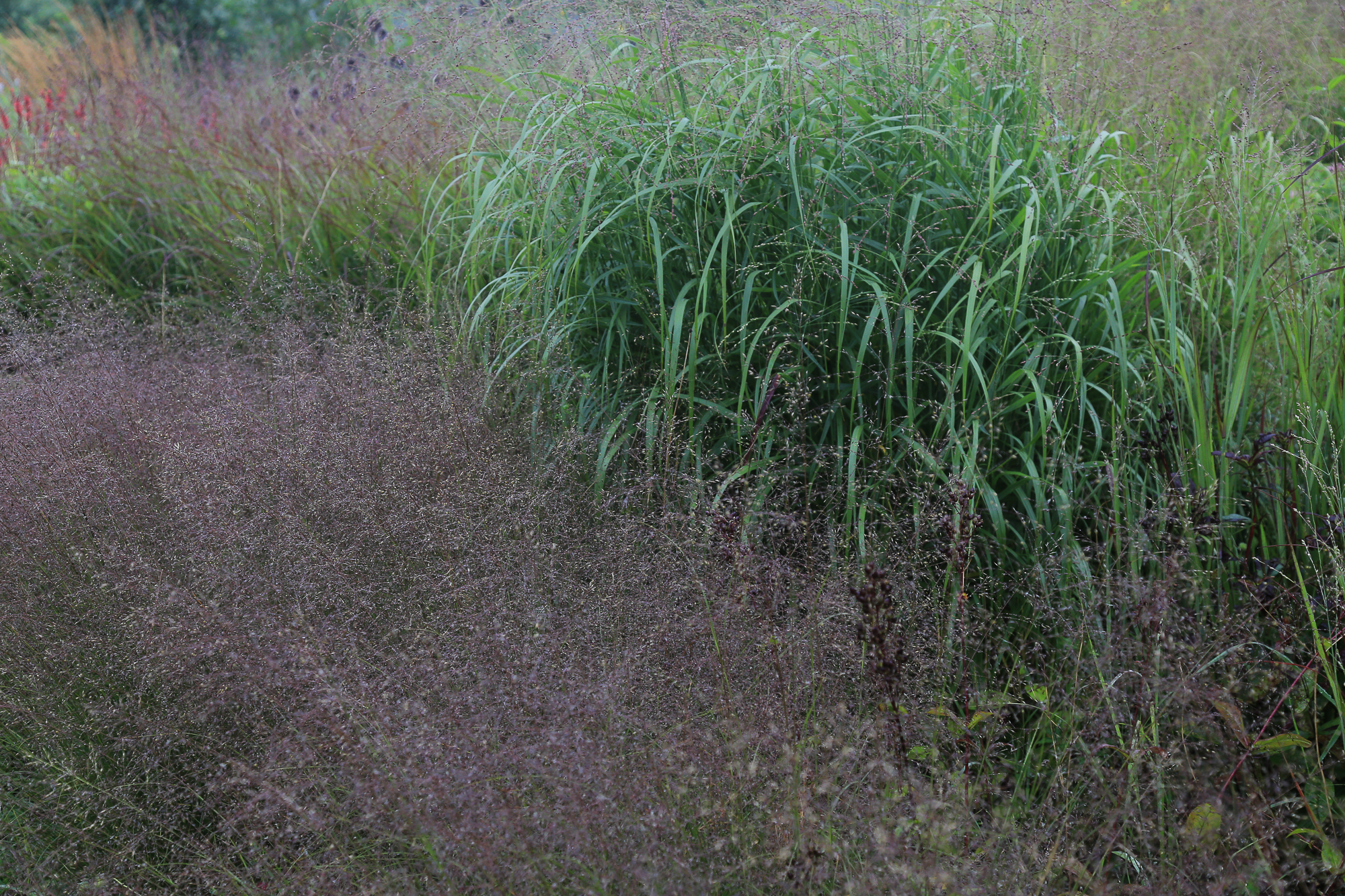Visiting Lianne's Siergrassen - with Carolyn Mullet's Dutch Wave Garden Tour

Last summer I visited gardens in The Netherlands as a member of Carolyn Mullet's Dutch Wave tour to see the work of Piet Oudolf and many practitioners of the garden design movement he largely created ... the Dutch Wave, often called the New Perennial movement. My experience on this tour convinced me this is the best way to see gardens in distant places. The itinerary is well organized and packed with engaging destinations, and all the logistics of travel and lodging are taken care of for you. I've traveled on my own to see gardens but I find traveling alone, making multiple arrangements for transportation and lodging, even finding the gardens, very stressful and time-consuming. If you want to see gardens, this is the way to go. Click on carexTours for more information, and for a special price available until July 8.Clouds and misty rain only amplify colors, form and atmosphere in gardens. On the day we visited Lianne's Siergrassen, the subdued light and wet conditions actually deepened the colors of the plants in Lianne's vast demonstration gardens. A phlox shining out from the darkness within grass heavy with moisture ...... or a fading Rudbeckia standing tall against a multicolored background of beautiful perennials, in fact everything, was saturated with subdued, evocative color .The gauzy effects of the light heightened the diaphanous quality of some grasses, as here where grass makes an ornamental screen against the blurred background.Because these are demonstration gardens, Lianne shows many ways to combine the plants she offers, sometimes growing them in large monocultural blocks, as with Hakonechola shown here ...... and in smaller, discrete blocks ...In other parts of the garden she uses mixed plantings to highlight similarities and contrasts in shape, texture, and color ...Nic and Sally, dressed for wet weather, but all smiles as they explore the riches of a nursery like few others.Such beautiful combinations as this--do they come about through chance or careful forethought? I imagine the former, but sometimes you just have to let the plants do what they do, and appreciate the result.Here a sea of mixed grasses, carex and sedum.And Althea cannabina, a plant I first saw in the summer of 2015 in London, a miniature-flowered hollyhock, which has become rather commonplace in Europe, though I have yet to see it in the US (except on the High Line) seen here at full height ...... and here in close-up.Here a matrix of grasses (Little bluestem) and perennials (Liatris and other things) patterning the ground surface ...... another mixed planting of a Solidago, Pycnanthemum, and grasses ...... and the bold foliage of a Miscanthus contrasted with a cloud of Sporobolus heterolepis in flower.The combinations of grasses and perennials work at different scales. Below, the gauzy Sporobolus setting off the dark seedheads of what appears to be a Penstemon digitalis.And Guara lindheimeri, its sharp white flowers ornamenting the soft grasses behind.The bold seedheads of Veronicastrum offer a dramatic contrast with the background of grasses (and with the dark foliage of trees).If you look closely, you'll see Carolyn almost buried among the grasses.Lianne's Siergrassen is only one of many destinations on the Dutch Wave tour. You can also visit the iconoclastic Jac. P. Thijssepark, the Piet Oudolf-designed Vlinderhof, gardens of Noël van Mierlo, John Schoolmeester's work at Kasteel Geldrop, Van Nature, Piet Oudolf's own private garden Hummelo, Peter Janke's Hortvs nearby in Germany, the historic Het Loo Palace, the Kröller-Müller Museum, Henk Gerritsen's Priona garden, the gardens of Mien Ruys, Jaap de Vries' Jakobstuin, and many other gardens, special nurseries, and other sites. For details, go to carexTours.





















